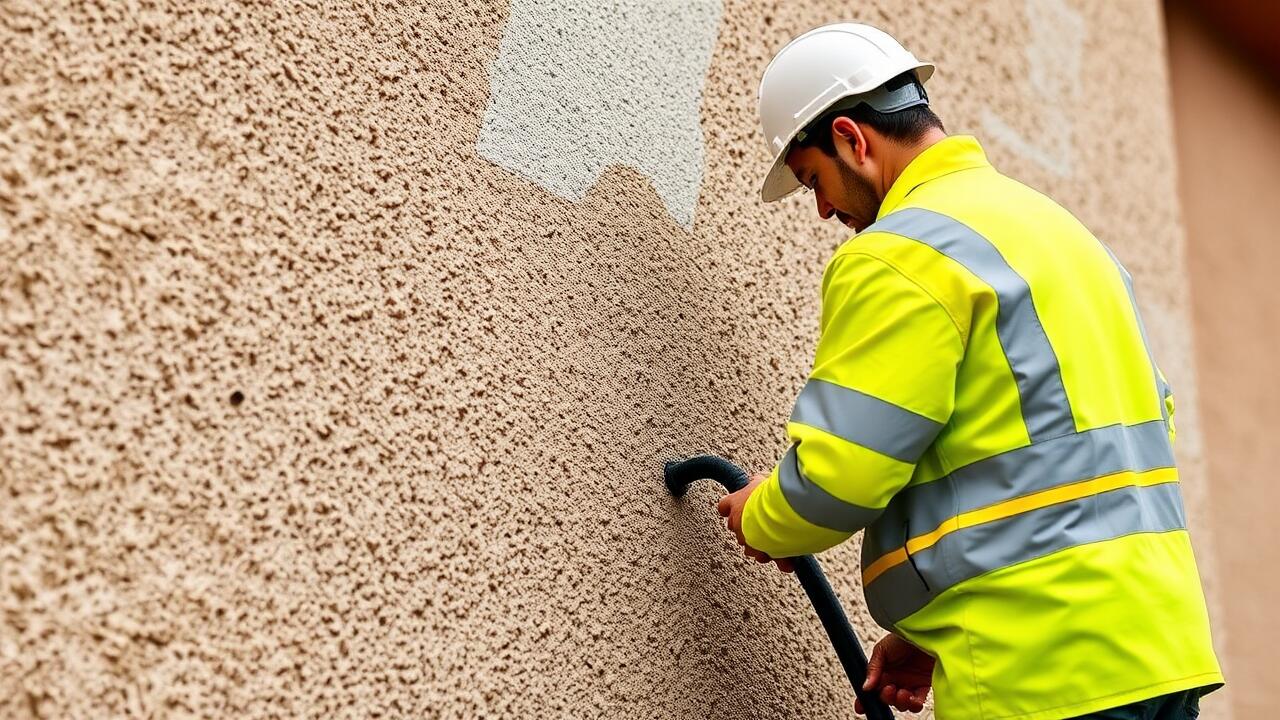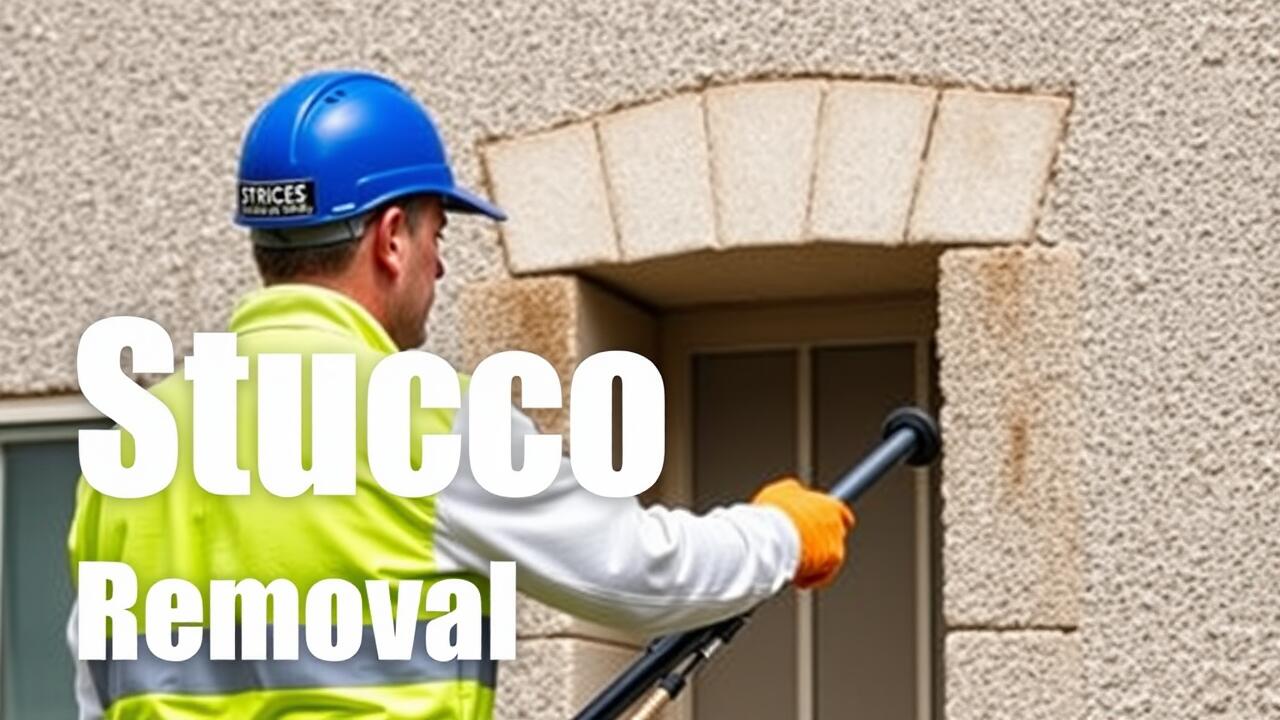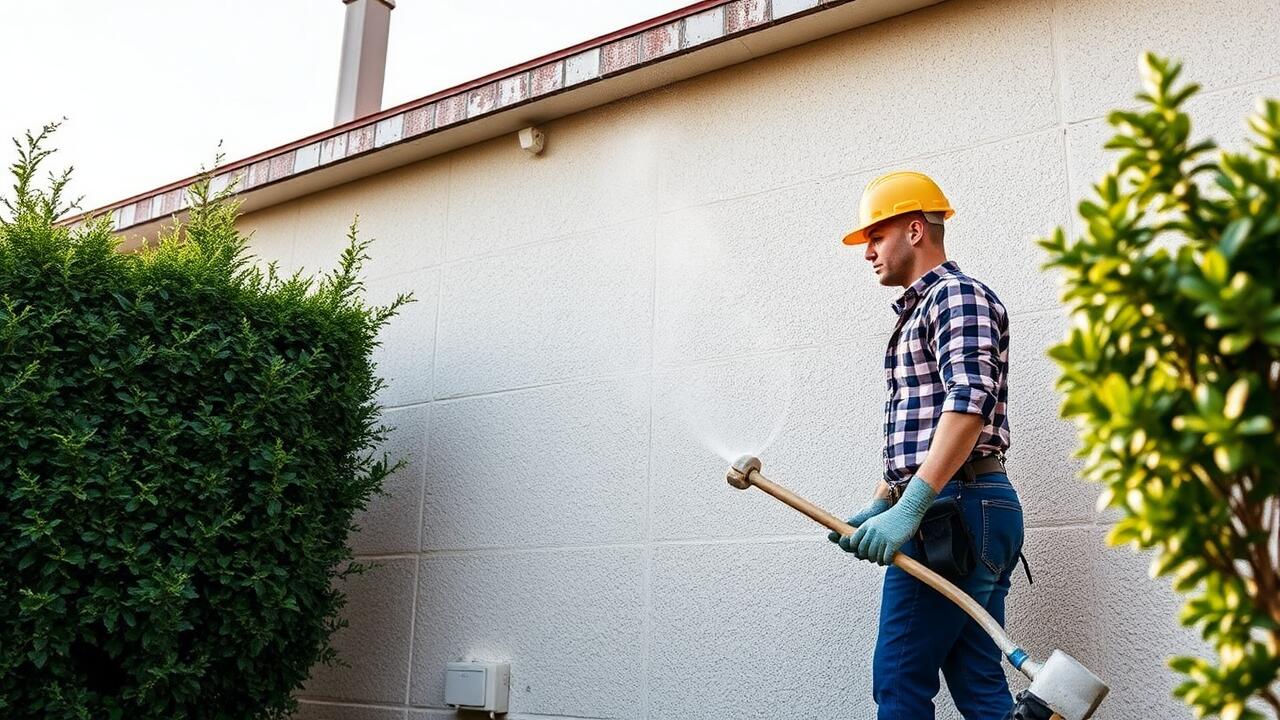
Choosing the Right Abrasive Material
Selecting the appropriate abrasive material is crucial for effective stucco removal. Different materials result in varying outcomes, impacting both the speed and quality of the job. Common choices include aluminum oxide, glass beads, and garnet. Aluminum oxide is known for its aggressive cutting action, making it suitable for tougher stucco layers. Glass beads offer a gentler touch, preventing damage to underlying surfaces, while garnet strikes a balance between aggressiveness and finish quality.
When considering options for stucco removal in areas like Watts, Los Angeles, local availability can also play a critical role in material selection. Some abrasives may work better in specific climates or environmental conditions, affecting performance and efficiency. It’s essential to evaluate factors such as the existing stucco condition, the desired finish, and the surrounding materials before making a final decision. Understanding these aspects ensures not only optimal results but also compliance with best practices in abrasive blasting.
Popular Materials Used in Stucco Removal
When it comes to stucco removal, the choice of abrasive material can significantly impact the efficiency and effectiveness of the process. One commonly used material is coal slag, known for its hard and angular particles. This type of abrasive is particularly effective for removing tough stucco without causing excessive damage to the underlying surface. Another popular option is baking soda, which offers a gentler approach and is less likely to harm the substrate. This makes it suitable for projects requiring a more delicate touch, especially in areas where preservation of the underlying structure is important.
Other materials include glass beads and crushed walnut shells, each with unique properties that cater to various stucco types and removal challenges. Glass beads offer a smoother finish while being environmentally friendly. Crushed walnut shells provide a biodegradable option that minimizes dust and is less abrasive than harsher alternatives. Importantly, residents considering these methods in the Stucco Removal Watts, Los Angeles area should evaluate the condition of the stucco and the desired outcome to select the most suitable abrasive material for their specific project.
Surface Preparation Before Blasting
Proper surface preparation is critical for effective stucco removal. Before initiating the blasting process, all furniture and landscaping near the work area should be moved or covered to protect them from debris. It is essential to inspect the surface for any underlying issues, such as moisture intrusion or structural damage. Identifying these problems early can prevent complications later and ensure a more efficient removal process.
Additionally, the area must be thoroughly cleaned to eliminate dust, dirt, and other contaminants. This step not only enhances the effectiveness of the blasting but also helps in maintaining safety standards. In regions like Stucco Removal Watts, Los Angeles, where environmental conditions may vary, ensuring a clean surface can influence the outcome significantly. Taking these preparatory steps will contribute positively to the overall efficiency and success of the stucco removal project.
Steps to Prepare a Surface for Effective Removal
Preparation is crucial for effective stucco removal. Begin by ensuring the work area is clear of any debris, tools, and obstructions that might interfere with the blasting process. Protect surrounding surfaces such as windows, doors, and landscaping to avoid any accidental damage. Tape and plastic sheeting can be used to shield areas that need to remain intact. Next, assess the stucco condition; any cracks or loose pieces should be addressed before blasting to facilitate a smoother removal process.
After securing the area, consider the necessary safety measures. Gear up with appropriate personal protective equipment (PPE), including goggles, respiratory masks, and gloves. Establish a safe perimeter and inform any nearby residents about the impending work, especially those in areas like Stucco Removal Watts, Los Angeles, where noise and dust may be a concern. This preparation sets the stage for an effective and efficient blasting operation while maintaining safety for everyone involved.
Post-Blasting Cleanup Procedures
The cleanup process following abrasive blasting is crucial for ensuring a safe and tidy environment. After completing the stucco removal, it's essential to carefully gather and dispose of all debris, including both the removed stucco and any abrasive materials used during the blasting. A vacuum system equipped with proper filters can effectively minimize dust and prevent particles from spreading throughout the work area. This step not only facilitates a cleaner job site but also enhances the safety of everyone involved.
Incorporating a detailed plan for restoration ensures that the surroundings are returned to their original state. All areas affected by the blasting must be thoroughly washed down to eliminate any leftover residues. This is where professional services like Stucco Removal Watts, Los Angeles, come into play. They can assist with both the cleanup and any necessary repairs to the surfaces adjacent to the blasted area, ensuring a seamless transition from removal to restoration.
Best Practices for Site Restoration
Effective site restoration involves a series of careful steps to ensure the area is safe and visually appealing after abrasive blasting. Immediately following the completion of stucco removal, it is crucial to remove all debris and residual materials. This not only improves the aesthetics of the site but also prevents potential hazards that could arise from leftover abrasive material. Thorough cleaning can include sweeping, vacuuming, or using a pressure washer, depending on the extent of the mess left behind.
Stucco Removal Watts, Los Angeles, emphasizes the importance of assessing the surrounding environment during the restoration process. This includes inspecting nearby structures for damage and ensuring that no contaminants from the blasting process have compromised the integrity of adjacent surfaces. Proper signage should be put in place during the restoration to alert any passersby of ongoing work. By following these best practices, restoration can be carried out efficiently while maintaining safety standards and environmental considerations.
FAQS
What is abrasive blasting and how is it used for stucco removal?
Abrasive blasting is a method that uses high-pressure air to propel abrasive materials against a surface to remove unwanted coatings, such as stucco. This process efficiently strips away the material without damaging the underlying structure if done correctly.
What are the most commonly used abrasive materials for stucco removal?
Popular materials for stucco removal include glass beads, aluminum oxide, walnut shells, and baking soda. Each material has unique properties that make it suitable for different types of surfaces and levels of removal required.
How do I prepare a surface before starting the abrasive blasting process?
Surface preparation involves cleaning the area to remove any loose debris, covering surrounding surfaces to protect them from debris, and ensuring that any necessary permits are in place. It is also important to assess the condition of the stucco to determine the best approach for blasting.
What are the best practices for site restoration after abrasive blasting?
Post-blasting cleanup should include removing all abrasive materials and debris from the site, washing down the area to eliminate dust, and inspecting the underlying surface for any damage or remaining stucco. It’s also advisable to restore any protective coverings and ensure the site is safe for use.
Is abrasive blasting safe for the environment?
When conducted properly, abrasive blasting can be environmentally safe. Using biodegradable materials, implementing dust control measures, and properly disposing of waste can reduce its environmental impact. Always check local regulations to ensure compliance with environmental standards.



